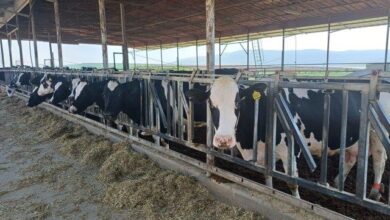Cherry cultivation in the Negev region in Israel – trying to turn a dream into reality

Yitzhak (Itzik) David (azikd@mop-rng.org.il), Ramat Negev Agricultural Research Station, Ashalim, Israel.
At the Negev Plateau Agricultural Research Station, Israel, it was decided to examine the feasibility of cherry
tree cultivation in this region, namely, the Negev plateau region. For this purpose, an experimental plot of
cherry tree cultivars was planted in 2019, at the ‘Pnina’ farm at Mitzpe Ramon, the owner of which is Pinchas
(Pini) Almakays. The Mitzpe Ramon region has a potential for an early cherry tree cultivation, due to the
accumulation of a relatively ample number of ‘cold units’ in the winter and in an early spring, without rains.
Rains in the spring cause cracking of the fruit, which is one of the greater limits/obstacles in the cultivation of
early cherry in most of the higher plateau regions in Israel.
The two research aims were:
1. The examination of the possibility to cultivate and produce a commercial yield of cherry fruits in the region
Of Mitzpe Ramon;
2. To try to promote timing of cherry fruit set, in using different agro-technical treatments.
In the winter of 2022-2023, the winter was characterized by high temperatures in the months of November-
January, and thus the accumulation of ‘cold units’ was low during this winter season. This brought about a
low cherry fruit yield in all regions of cherry cultivation in Israel. The trees in the experimental plot entered
their primary production year, and an impressive flowering of the trees was observed, but a scarcity of ‘cold
units’ influenced negatively fruit ripening, leading to a low cherry fruit yield. With tree maturing, a rise in
the fruit yield could be expected, subject to relatively low temperatures during the early winter months
(November-January).
We are aiming at realization of the potential for commercial cultivation in the high Negev plateau region by
way of introducing more cultivars with lesser demands for ‘cold units’, and also carrying out some agro-
technical measures/operations for improving the growth conditions.




